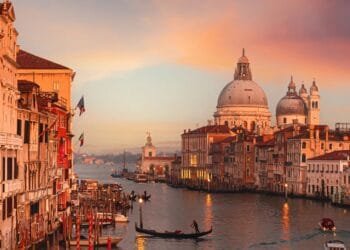The Chhinnamastika Temple, dedicated to Goddess Chinnamasta, is a revered Hindu pilgrimage center located in Rajrappa, in the Ramgarh district of Jharkhand, India. This sacred place draws devotees from all parts of Jharkhand, as well as from the neighboring states of West Bengal and Bihar. The temple is renowned for its Tantric style of architectural design and holds immense religious significance.
Situated on a hillock at the confluence of the Damodar and Bhera rivers near the Rajrappa falls, the Chhinnamastika Temple is a place of great spiritual importance. The location itself holds a special significance as it represents the union of Bhairavi Nadi, the female energy, and Damodar Nada, the male energy. This union symbolizes the concept of “vipareeta rati” or “opposite copulation” as described in the dhyana (meditation) of Devi Chhinnamasta.
The main temple, adorned with a natural rock covered with an ashtadhatu (eight-metal alloy) kavacha (cover), is worshipped as the goddess Chhinnamasta. Alongside the main temple, there are ten other temples dedicated to various deities such as Surya, Hanuman, and Shiva. The complex also houses smaller temples of Ashtamatrika and Dakshina Kali, as well as the temples of Mahavidyas – Tara, Shodashi, Bhuvaneswari, Bhairavi, Bagla, Kamla, Matangi, and Dhumavati.
The Chhinnamastika Temple has a rich historical and cultural heritage. It has been a center of worship for tribals since ancient times, and the Vedic book Durga Saptashati also mentions its significance. The temple’s art and architectural design resemble those of other tantric sites, such as the Kamakhya Temple in Assam. The temple is considered one of the ten Mahavidyas, representing the diverse aspects of the goddess.
The temple’s popularity extends beyond its religious significance. It is a destination for pilgrims seeking blessings for their new vehicles, as it is believed that the first worship of vehicles here multiplies their lifespan and brings luck to the owners. The temple also serves as a venue for marriages and the ritual of Mundan, or shaving the head. Devotees tie a red thread around a rock in the temple, symbolizing their wishes and seeking the fulfillment of their desires.
The Chhinnamastika Temple attracts a large number of devotees throughout the year, with particularly significant gatherings during the full moon and new moon nights. The temple is also a pilgrimage site for Santals and other tribals who come to immerse the ashes of their loved ones in the Damodar River. They refer to Rajrappa as “Thel Kopi Ghat” (Water Ghat) in their folk songs, and the oil used after bathing holds cultural significance for them.
Apart from its religious importance, Rajrappa offers a picturesque natural environment, making it a popular picnic spot. The hilly landscape, lush forests, and rivers create a serene backdrop for visitors. The region is also known for its hot water spring and the majestic waterfall created by the Bhera River joining the Damodar River from a height of 20 feet. Visitors can enjoy boat rides along the river, marveling at the various rock formations along the riverbank.
The Chhinnamastika Temple in Rajrappa is not only a place of spiritual devotion but also a testament to the rich cultural heritage of Jharkhand. Its Tantric architecture, historical significance, and natural beauty make it a must-visit destination for both religious and leisure travelers. Whether seeking blessings, immersing in the serenity of nature, or exploring the region’s cultural traditions, a visit to the Chhinnamastika Temple promises a memorable experience for all who journey there.

























